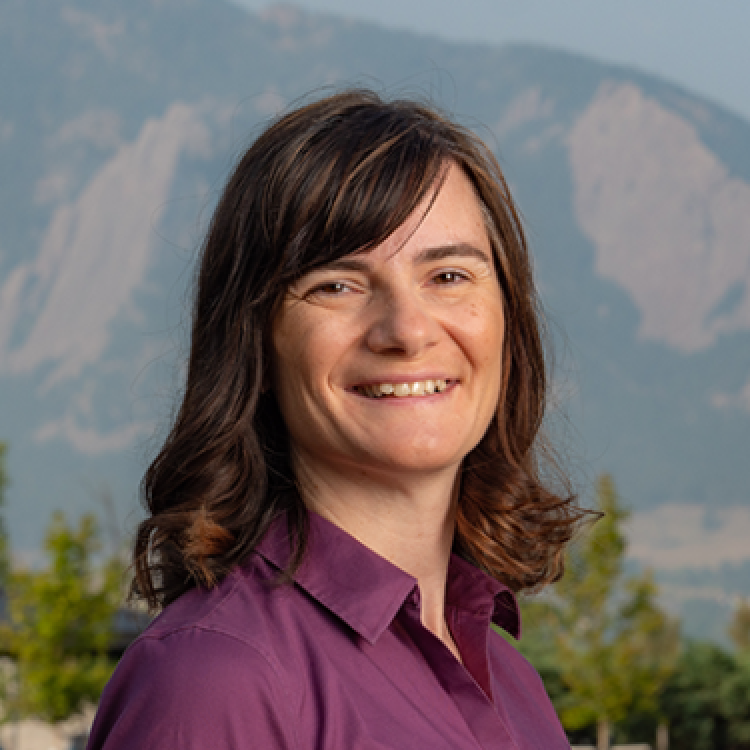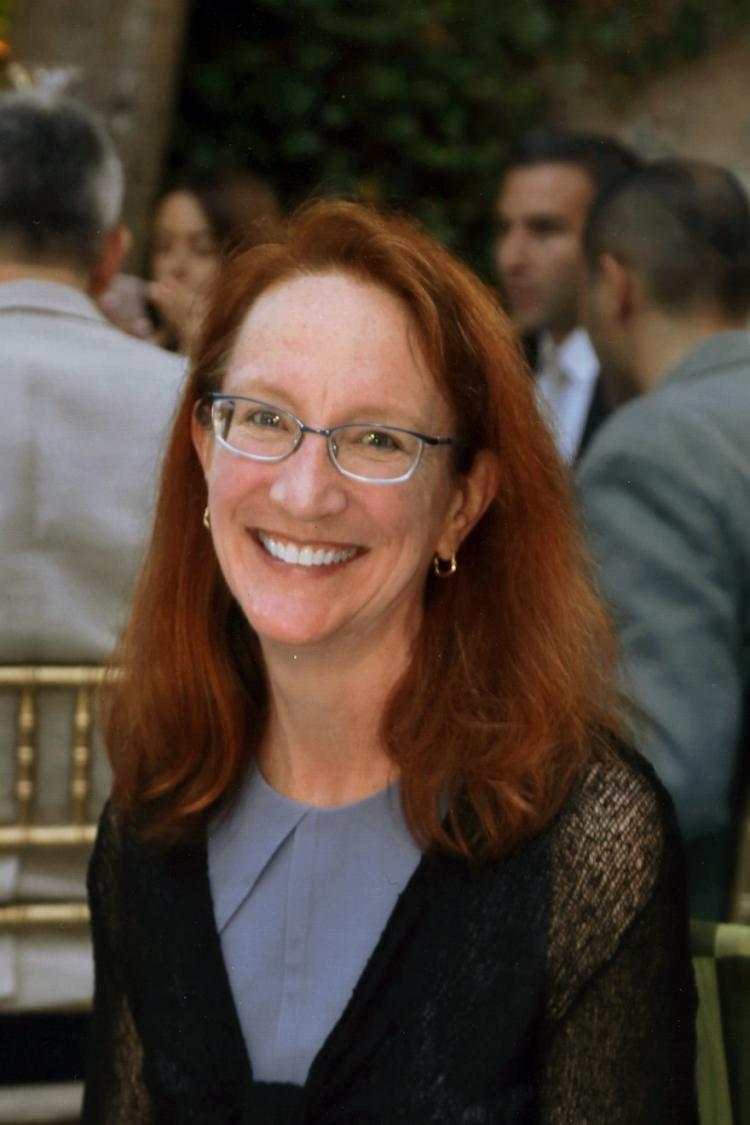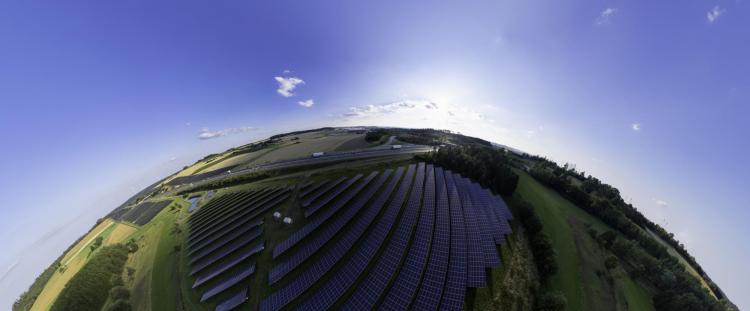Chemist, classicist earn prestigious Guggenheim Fellowships
Gordana Dukovic and Elspeth Dusinberre win support to enlarge the frontiers of sustainable chemistry and knowledge of the ancient Phrygians, respectively
Two University of Colorado Boulder professors have won prestigious Guggenheim Fellowships, which support the recipients’ research and scholarly work and aim to help them “engage in research in any field of knowledge and creation in any of the arts, under the freest possible conditions.”
Gordana Dukovic, professor of chemistry, and Elspeth Dusinberre, professor of distinction of classics, are among 171 scholars and artists in the 2023 class of fellows announced last month by the John Simon Guggenheim Memorial Foundation.
Chosen from a rigorous application and peer-review process out of almost 2,500 applicants, “these successful applicants were appointed on the basis of prior achievement and exceptional promise,” the foundation said.

Top of the page: Ancient city of Gordion, in Phrygia. Above: Gordana Dukovic (PhD Columbia University 2006) is an expert in nanotechnology/materials, physical chemistry and renewable energy.
“Like Emerson, I believe that fullness in life comes from following our calling,” said Edward Hirsch, president of the Guggenheim Foundation and 1985 fellow in poetry. “The new class of fellows has followed their calling to enhance all of our lives, to provide greater human knowledge and deeper understanding. We’re lucky to look to them to bring us into the future.”
With support from the Guggenheim fellowship, Dusinberre plans to investigate the social structures, palaces and uses of power among the early Phrygians, who lived in what is now Turkey ca. 950-800 BCE. Meanwhile, Dukovic aims to use the fellowship support to develop new research directions in using nanomaterials for sustainable chemistry.
Seeking insights into the ancient Phrygian kingdom
Dusinberre explains the context of her work this way: Phrygia was the main powerhouse society of what is now Turkey in the years 900-600 BCE, but its social structures, palaces and expressions of power remain relatively poorly understood. She will focus on the enormous buildings and material culture of the elite quarter at Gordion, capital of Phrygia and seat of King Midas of the Golden Touch from Greek myth.
In 800 BCE, she explains, Gordion was consumed in a great conflagration apparently caused by an accident—an event that marked the end of the Early Phrygian period (ca. 950-800 BCE). Gordion's inhabitants buried the burned buildings under meters of clean clay and rebuilt the city at a higher level but on the same plan as before, sealing off and preserving the buildings and artifacts “in an almost Pompeii-like manner.”

Elspeth Dusinberre (PhD Michigan 1997) is interested in cultural interactions in Anatolia, particularly in the ways in which the Achaemenid Persian Empire (ca. 550-330 BCE) affected local social structures and in the give-and-take between Achaemenid and other cultures.
“The area was excavated between 1950 and 1973, but the results have hitherto been presented only very partially and in disparate publications,” Dusinberre writes. “My scholarship will interrogate how people lived at Gordion in 800 BCE, why they made the decisions they did, how they negotiated power, and how these local behaviors related to the other great societies of the eastern Mediterranean at the time. Complex choices and actions at the nexus of intertwined politics and religion make my project germane to modern humanistic studies as well as ancient.”
Dusinberre notes that Gordion’s archaeological import is indisputable, adding that all other first-millennium archaeological sites in this part of the world are dated and contextualized in relation to Gordion.
“My study will present datable archaeological material of the Early Phrygian period for the first time, helping other archaeologists throughout the eastern Mediterranean to date their own artifacts in relation to Gordion’s and understand their sites’ cultural developments within the context of Gordion’s,” she writes.
“This is particularly significant because we have no texts from Phrygia to help scholars understand this period: the archaeological material is our only source of evidence.”
Employing the fellowship and a sabbatical leave, Dusinberre plans to finish a book reporting the results of her work by the end of next year. Meanwhile, she notes, “it is tremendously exciting to be poised so as to bring this remarkable material to the public.”
Dusinberre holds a PhD in classical art and archaeology from the University of Michigan at Ann Arbor, and she graduated summa cum laude with a degree in classical archaeology from Harvard University. She joined the CU Boulder faculty in 2000.
Researching ways to harness solar power to replace fossil fuels

Each kilowatt-hour (kWh) of solar that is generated will substantially reduce greenhouse gas emissions like CO2, as well as other dangerous pollutants such as sulfur oxides, nitrogen oxides and particulate matter. Solar also reduces water consumption and withdrawal. (ENERGY.GOV)
Dukovic studies light-driven processes in nanoscale materials and describes herself as a passionate teacher and mentor of junior scientists. In addition to her faculty position, she serves as an associate director of the Renewable and Sustainable Energy Institute, where she is a fellow.
As Dukovic notes, “The overarching goal of my research is to replace fossil fuels by harnessing solar energy to drive useful and interesting chemical reactions with light.”
The potential of solar energy is staggering, she observes: “It would take just a little over an hour of solar energy that strikes the Earth to power the planet for a year, but this diffuse and spread-out energy must first be converted into usable forms like electricity and fuels.”
Making this conversion efficient and cost-effective is a clear path toward a sustainable and climate-friendly future. One method is using sunlight to make new chemical bonds that store solar energy, so that it can be used on demand, Dukovic notes. “To do this, we need materials that absorb light optimally and catalysts that speed up the making of new bonds.”
Dukovic’s research lab seeks to contribute to a sustainable future by using sunlight to drive important chemical reactions. She studies structural, electronic and excited state properties of semiconductor nanomaterials to elucidate the processes that occur immediately after absorption of light.
Dukovic also couples nanomaterials with catalysts such as enzymes to drive useful and complex reactions with sunlight. She has received the NSF CAREER Award and was named a Sloan Research Fellow, Cottrell Scholar, Beckman Young Investigator and finalist for the Blavatnik National Award for Young Scientists.
Dukovic holds a PhD in physical chemistry, with distinction, from Columbia University and earned a BA in chemistry, graduating summa cum laude and as valedictorian from Douglass College at Rutgers University. She joined the CU Boulder faculty in 2009.

